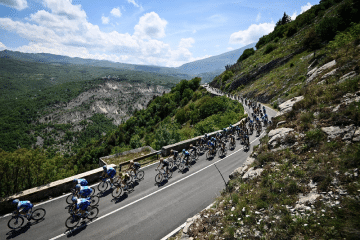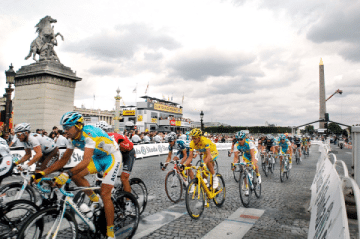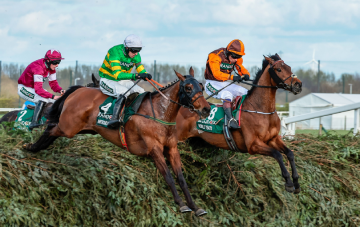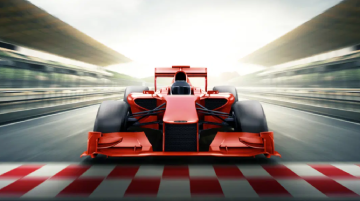Are you ready for an exciting look into the exhilarating world of Vuelta a España Bitcoin Betting? Look no further! This GOSUBETTING guide to the Vuelta a España with Bitcoin is specially crafted for Cycling lovers. It is also for crypto bettors like you, who are excited to enjoy the future of sports betting.
Vuelta is the most volatile race with lots of hairpin bends up hills that make for an exciting betting experience. The purpose of this Guide is to explain all the ins and outs of using your Bitcoin to bet on La Vuelta.
Best Vuelta a España Bitcoin Bookmakers & Sportsbooks
The Vuelta a España Overview
The Vuelta a España, begun in 1935 by the Spanish newspaper Informaciones. It followed the footsteps of its French and Italian predecessors, using the event for advertising purposes. Originally a spring event, the Vuelta shifted to its now-traditional September schedule in 1995. Thus marking the end of the Grand Tour season as it’s known today.
Spanning 21 stages with two rest days, the Vuelta is infamous for its challenging climbs right from the start. Creating a grueling test of endurance for all cyclists. This race’s unpredictability is a key feature, highlighted by Alberto Contador’s surprising move a few years ago. On what seemed like a more manageable stage, Contador dramatically changed the race dynamics by overtaking the then-leader, Joaquim Rodríguez. Showcasing the Vuelta’s potential for unexpected turns. The course is peppered with many short, steep climbs that often go unnoticed in the race profiles. Yet could constitute significant mountain stages on their own.
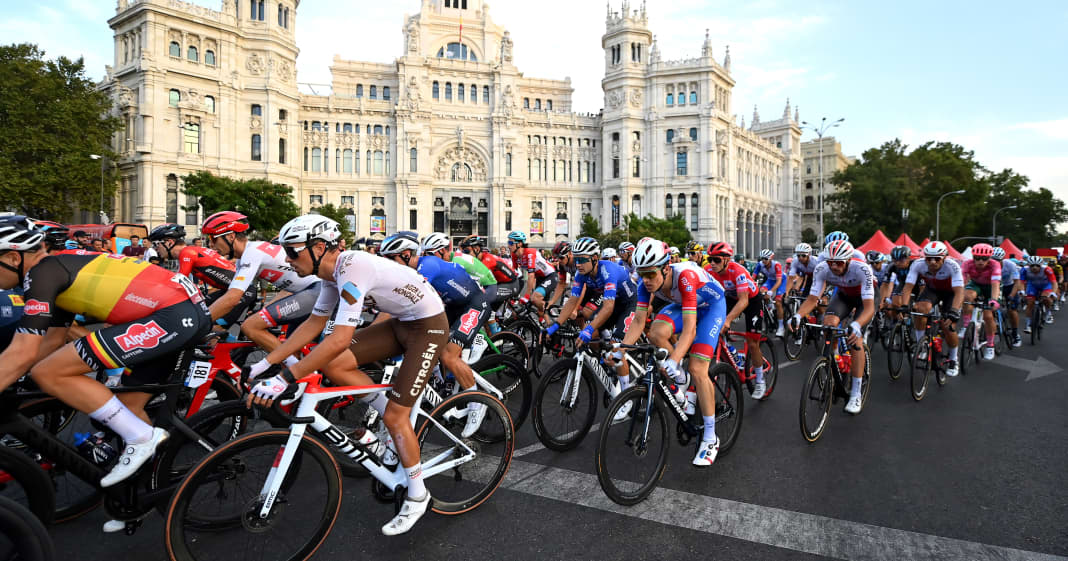
The Vuelta a España: A Historical Perspective
The Vuelta a España (the tour of Spain) was added later as the third part of the Grand Tour in the trio. Born of the need to compete with the already well-established Tour de France and Giro d’Italia, Spain has created its response, in which it hopes to be on par with the best.
The early years of Vuelta however were full of trouble. After a while, the Spanish Civil War started, causing frequent disruptions in the competition schedules.
The Vuelta experienced a shift during the 1950s as it attracted major personalities of the cycling world. In 1963, Jacques Anquetil managed to become the first cyclist to win all three grand tours. This had already brought the Vuelta a new level of appreciation then.
Despite this, in 1968 ETA, a Basque nationalist terrorist group attacked it and cast a shadow on that year’s event.
Initially placed in the cycling calendar during a period that often coincided with the Spring Classics and the Giro d’Italia, the Vuelta struggled to consistently draw top-tier talent. This changed dramatically in 1995 when the race shifted to an August-September slot. This move not only increased the Vuelta’s prominence but also turned it into an important preparation stage for the UCI Road World Championships, drawing a more competitive array of cyclists.
Record-Breaking Achievements at the Vuelta a España
Vuelta a España is not just about a competition, but it is a place where cycling history is created, legends arise and records are broken. Icons such as Eddy Merckx, Bernard Hinault, and Sean Kelly have done this race proud. Their performance has gone down in cycling history.
Recently, Alberto Contador, Chris Froome, and Alejandro Valverde are closely associated with the Vuelta, etching their names on our heads with their greatness. The recent triumphs of Primož Roglič (2019-2021) and Remco Evenepoel (2022) are a testament to the emergence of new legends in the sport.
Let’s take a look at some of the Vuelta’s most remarkable records and achievements:
- Most Overall Victories: Roberto Heras stands out with four overall wins (2000, 2003, 2004, 2005), a testament to his mastery in the mountains and efficiency in time trials.
- Consecutive Victories: Primož Roglič’s three consecutive wins (2019-2021) underscore his remarkable consistency, a rare accomplishment in Grand Tour cycling.
- Oldest and Youngest Winners: Chris Horner’s 2013 victory at 41 years old marked him as the oldest Grand Tour winner, while Angelino Soler’s 1961 win at 21 years set the record for the youngest Vuelta champion.
- Most Stage Wins in a Single Edition: Freddy Maertens’ 13 stage victories in 1977 stand as a monumental feat in Grand Tour history.
- King of the Mountains: José Luis Laguía, with five King of the Mountains titles, demonstrated exceptional prowess in Spain’s rugged terrain, securing his place as a Vuelta legend.
The Points Classification of the Vuelta a España
The points classification is a vital and exciting aspect of the Vuelta a España, ranking cyclists based on their performance in each stage. This system, first introduced in 1945, has evolved over the years to become a key part of the race’s strategy and excitement.
Early Years of the Points Classification
Initially sponsored by Pirelli in 1945, the points classification had a unique scoring system:
- The stage winner received 100 points, with each subsequent finisher receiving one point less than the rider ahead.
- The first five riders of each stage earned an additional 12 points for every minute they finished ahead of the sixth-placed rider.
- Points were also awarded for the mountains classification, with each point translating to two points in the points classification.
- Intermediate sprints offered additional points, adding another layer of strategy to the race.
Despite its initial success, this format was not used in other editions until it was reintroduced in 1955.
Current Significance of the Points Classification
Today, the points classification remains an integral part of the Vuelta a España, adding an extra layer of excitement and competition to the race. It rewards consistency and versatility, as riders must perform well across various stages and terrains to gather points.
The Jerseys of the Vuelta a España: A Symbol of Cycling Prestige
The Red Jersey (Maillot Rojo)
The ‘maillot rojo’ or red jersey, is awarded to the race leader after each stage, it’s a symbol of speed and endurance in the Vuelta a España. The holder is the cyclist with the shortest overall time up to that stage. In addition to stage victories, riders can gain bonus seconds for top-three finishes and at intermediate sprints or categorized climbs, adding a tactical element to the race.
This jersey has evolved since the Vuelta’s inception in 1935, beginning as an orange jersey, then white, and even gold, before settling on red in 2010. Mark Cavendish was the first to wear this updated version.
The Polka-Dot Mountains Jersey
The mountain jersey, easily recognizable with its blue polka dots on white, is awarded to the King of the Mountain classification leader. This classification is decided by points earned on categorized climbs, with higher points for tougher climbs, including the ‘Cima Alberto Fernandez’ status climbs. The jersey has been a part of the Vuelta since the beginning, changing from green to its current design in 2010.
The Green Points Jersey (Maillot Verde)
The ‘maillot Verde’ or green jersey is awarded to the leader of the points classification, recognizing consistent high finishes and success in intermediate sprints. Points vary based on the stage type, with flat stages offering the most. This system rewards versatile riders who perform well across various terrains.
The White Young Rider’s Jersey (Maillot Blanco)
The maillot blanco is given to the best young rider in the general classification, open to riders under the age of 26. This classification, introduced in 2017, mirrors similar ones in the Giro and Tour, celebrating the achievements of talents that are coming up in the sport. This jersey is awarded based on cumulative time, favoring young riders who do well in the mountains.
These jerseys not only represent individual achievements but also signify the multifaceted nature of the Vuelta a España, celebrating speed, endurance, climbing prowess, and young talent.
Understanding the Grand Tours in Professional Cycling
In the world of professional road bicycle racing, the term “Grand Tour”, as mentioned before, refers to the three major European stage races: these include Giro d’Italia, Tour de France, and Vuelta an Éspana. These events are considered the most important tournaments in the world cycling calendar. In terms of UCI (Union Cycliste Internationale), these are the events that give a huge number of points to the UCI World Tour and these are the only stage races allowed to exceed the specified timeframe.
Historical Significance and Timeline
- Tour de France: This is the oldest one established in 1903 and considered a grand tour. The event is also the biggest yearly sports gathering across the globe.
- Giro d’Italia: The first edition of Giro was conducted in 1909 and it always has challenging routes with a lot of climbs.
- Vuelta a España: As mentioned, The Vuelta began in 1935. It was initially used to take place during the spring seasons until it was changed to end in September 1995 just to prevent a conflict with the Giro d’Italia.
Unique Attributes of Each Tour
Although they all follow a common race pattern as three-week affairs, with daily stages, each of them does have its peculiar features and problems. Giro takes place mostly in May, tour takes in July while Vuelta ends in late August and early September. Tour de France, besides being the oldest, attracts maximum points from racers on a global scale.
The Triple Crown of Cycling
Winning the Triple Crown (Tour de France – The Giro d’Italia – The Road World Cycling Championship) is an outstanding accomplishment in cycling.
Women’s Participation in Equivalent Races
As of 2023, there are no three-week races on the women’s road cycling circuit equivalent to the men’s Grand Tours. However, events such as the Vuelta Femenina (first held in 2023), Giro Donne (since 1988), and various iterations of the women’s Tour de France (with Tour de France Femmes starting in 2022) are considered the closest equivalents, albeit shorter in duration.
Legacy and Achievements
At present only seven cyclists have won all three grand tours in their careers. With the likes of Jacques Anquetil, Eddy Merckx, Felice Gimondi, Bernard Hinault, Vincenzo Nibali, Alberto Contador, and Chris Froome. For example, Contador and Hinault have conquered each Grand Tour twice whereas Hinault, Merckx, and Froome have done so consecutively, demonstrating their greatness in this sport, which is quite remarkable.
Featured Bitcoin Vuelta a España Betting Site
BC.Game Welcome Bonus
180% up to $20,000 First Deposit Bonus
Lisbon Set to Welcome the Vuelta a España Start in 2024
As confirmed by the organizers, the 2024 Vuelta a España will kick off from Lisbon, the lively capital city of Portugal. It is the second time Lisbon has hosted such an event as the beginning of the race was once held on this date in 1997. It’s also a notable moment in the Vuelta’s storied 89-year history, as it will be only the fifth instance of the race kicking off outside Spanish borders.
The grand opening stage of this three-week cycling spectacle is scheduled for August 17, with a route starting in Lisbon and concluding in Oeiras. The following stage is set to begin in the picturesque resort town of Cascais, and then weave its way northward to Ourem. The third stage will see cyclists journeying from the quaint Portuguese town of Louisa to Castello Branco, ensuring a captivating blend of scenic routes and challenging rides right from the start.
Preview of the Anticipated Start List for Vuelta a España 2024
The Vuelta a España is set to feature an impressive lineup of teams and notable riders. Here’s a glance at the preliminary start:
- Lotto Dstny (PRT): Featuring Thomas De Gendt, known for his breakaway skills and endurance.
- Decathlon AG2R La Mondiale Team (WT): A team with a solid track record in this race.
- Alpecin-Deceuninck (WT): Another strong contender in the World Tour, known for its strategic prowess.
- Arkéa – B&B Hotels (WT): A team that has consistently shown resilience and determination in the race.
- Astana Qazaqstan Team (WT): Known for their aggressive racing style and tactical acumen.
- Bahrain – Victorious (WT): A team with a reputation for excellence in stage races.
- BORA – hansgrohe (WT): Regularly seen at the forefront of major cycling races.
- Cofidis (WT): Featuring Guillaume Martin, a rider known for his climbing ability and consistency.
Continued Below
- EF Education-EasyPost (WT): A team that often stands out for their teamwork and strategic racing.
- Groupama – FDJ (WT): A team with a solid mix of experienced and young riders.
- INEOS Grenadiers (WT): Featuring Egan Bernal, a renowned Grand Tour winner.
- Intermarché – Circus – Wanty (WT): A team known for their aggressive approach to racing.
- Team Visma | Lease a Bike (WT): Featuring Sepp Kuss and Wout Van Aert, both exceptional riders with impressive palmarès.
- Lidl – Trek (WT): With Mattias Skjelmoese, a rising star in the cycling world.
- Movistar Team (WT): Featuring Nairo Quintana, a climber of great renown.
- Soudal – Quick Step (WT): A team known for their sprinting prowess and tactical racing.
- Team DSM-Firmenich PostNL (WT): A team with a reputation for strong performances in Grand Tours.
- Team Jayco AlUla (WT): Known for their competitive spirit and strategic racing.
- UAE Team Emirates (WT): A top-tier team with consistent performances in major races.
This lineup sets the stage for an exhilarating journey in the La Vuelta, promising a blend of strategic racing, individual brilliance, and team tactics.
Vuelta a España: A Showcase of Climbing Excellence and Recent Winners
In comparison with the other Grand Tours, the Vuelta a España is famous for its preference for climbing ability. It’s a race dominated by climbers even though there are chances for sprinters but the end of such a race is usually seen on the winning podium of the best climber.
Here’s a glance at the recent winners in each classification:
| Year | GC Winner | Points Winner | Mountains Winner | Youth Winner |
| 2024 | ? | ? | ? | ? |
| 2023 | Sepp Kuss | Kaden Groves | Remco Evenepoel | Juan Ayuso |
| 2022 | Remco Evenepoel | Mads Pedersen | Richard Carapaz | Remco Evenepoel |
| 2021 | Primoz Roglic | Fabio Jakobsen | Michael Storer | Gino Mäder |
| 2020 | Primoz Roglic | Primoz Roglic | Guillaume Martin | Enric Mas |
| 2019 | Primoz Roglic | Primoz Roglic | Geoffrey Bouchard | Tadej Pogacar |
| 2018 | Simon Yates | Alejandro Valverde | Thomas De Gendt | – |
| 2017 | Chris Froome | Chris Froome | Davide Villella | – |
| 2016 | Nairo Quintana | Fabio Felline | Omar Fraille | – |
| 2015 | Fabio Aru | Alejandro Valverde | Omar Fraille | – |
| 2014 | Alberto Contador | John Degenkolb | Luis León Sanchez | – |
| 2013 | Chris Horner | Alejandro Valverde | Nicolas Edet | – |
| 2012 | Alberto Contador | Alejandro Valverde | Simon Clarke | – |
| 2011 | Chris Froome | Bauke Mollema | David Moncoutié | – |
| 2010 | Vincenzo Nibali | Mark Cavendish | David Moncoutié | – |
| 2009 | Alejandro Valverde | André Greipel | David Moncoutié | – |
| 2008 | Alberto Contador | Greg Van Avermaet | David Moncoutié | – |
This list highlights the Vuelta as the climbers’ heaven, whose podiums are always graced by some established stars as well as newcomers year after year.
Bitcoin Betting Strategies in Vuelta a España
For a profitable experience in the Vuelta a España, it is important that you know and understand the common bet categories and their features that have an effect on different stages of Grand Tours.
The most popular Bets for Vuelta a España
- Futures Betting: It includes placing early bets for Vuelta a España’s outright winner. It provides a detailed list of participating riders with odds reflecting their likelihood of winning. For instance, if you bet $100 on a rider like Chris Froome at +350 odds, the payout would be $450 if he wins. However, futures betting is riskier due to the large number of competitors.
- Top 3 Finish: This bet offers a margin of safety, as it pays out if your chosen rider finishes anywhere in the top three. It’s a good option if you’re confident about a cyclist’s performance but not certain they’ll win outright.
- Top 10 Finish: Similar to the top 3 finish, but with your chosen cyclist needing to place within the top ten. The odds are reduced, but so is the risk.
- Stage Betting: This involves betting on individual stage winners. It’s particularly advantageous if you’re familiar with the riders’ strengths and the race’s various stages. For example, betting on a renowned climber on a mountain stage could offer great value.
- Special Bets: Some sportsbooks offer unique bets, like who will wear the red jersey after a particular stage, or the winner of the mountain or sprint classifications.
When betting with Bitcoin on the Vuelta a España, it’s important to consider the cyclists’ form, the race route, and their past performances. Each stage of the Vuelta has different challenges, and understanding a rider’s strengths and weaknesses can be key to successful Bitcoin betting.
Discover the Excitement of Racing
Bicycle racing is not only a sport but an adrenaline-filled affair involving all of your senses. You are pulled into a world of bold colors, rapid activities, and the appealing buzz as the chains spin and tires roar as the racers rush past.
Key Terms in Vuelta a España Races
Understanding the language of cycling can improve your betting experience. Here are some terms you’ll often hear/see:
- Echelon: A formation where riders align diagonally to maximize drafting in crosswinds.
- Shelled: Describes a rider struggling to keep pace, often falling back to the grupetto to ensure they finish within the time limit.
- Musette Bag: A small bag containing food and drink, handed to riders during the race.
- Peloton: The main pack of riders in the race.
- Breakaway: One or more riders who have moved ahead of the peloton.
- Domestique: A rider who supports the team’s lead rider.
- Hitting the Wall/Bonking: When a rider is depleted of energy and struggles to continue.
The Importance of Teams in Vuelta a España
Cycling is a deeply strategic team sport. Each race team has riders with specific roles, working collectively to support their leader. Domestiques, for example, perform crucial tasks like fetching supplies or leading the windbreak, all to ensure their leader’s success. Watching a team’s tactics unfold is as fascinating as the race itself.
Stay tuned for more insights into race strategies and updates as the cycling season progresses. Whether you’re a new Bitcoin bettor or a deep-rooted cycling fan, there’s always something new to learn and appreciate in the dynamic world of Vuelta a España.
Understanding Bitcoin Betting on Vuelta a España
Sportsbook betting with Bitcoin has become rather trendy. Placing bets on sports such as Vuelta a España using Bitcoin comes with a lot of benefits, including more privacy, faster transactions, and sometimes lower transaction costs than with ordinary money. Before getting into Bitcoin betting, make sure you understand how Bitcoin transactions work and the volatility of cryptocurrency values.
Setting Up for Bitcoin Betting
- Choosing a Bitcoin Wallet: It is important to have a reliable Bitcoin wallet before you can start betting with Bitcoin. It is a digital wallet where users can store and also transact with Bitcoins.
- Selecting a Bitcoin Sportsbook: Search for a Bitcoin-accepting sportsbook where Vuelta a España betting is available, including all the stages of the Vuelta a España race. Ensure the platform is reliable and has good reviews.
- Depositing Bitcoin: Transfer Bitcoin from your wallet to your Bitcoin sportsbook account. This process is usually straightforward and faster than traditional banking methods.
Advantages of Bitcoin Betting
- Anonymity: Bitcoin transactions offer more privacy than traditional betting online.
- Global Access: Bitcoin is decentralized, meaning it can be used globally without the need for currency conversion.
- Speed: Transactions with Bitcoin are typically faster, making depositing and withdrawing funds more efficient.
Risks and Considerations
- Value Fluctuations: The value of Bitcoin can be quite volatile. Be mindful that the value of your winnings in terms of fiat currency can change quickly.
- Regulatory Landscape: The legality of Bitcoin betting is different in each country. Make sure that you are following all your local laws.
Conclusion
We hope that by reading through our guide to betting on Vuelta a España, you have learned everything needed to help you understand and get started on placing your Bitcoin bets. This guide highlights the main components, the jerseys, and more, to help you profit from making knowledgeable bets with Bitcoin. Keep in mind that whether you are an experienced gambler or a cyclist lover who is new to betting, responsible gambling is vital. Keep updated, follow the race, and have a happy betting journey.
Cycling Events for Bitcoin Betting
Other Sports for Bitcoin Betting
Frequently Asked Questions
-
What is the Vuelta a España?
-
How do I place a bet on the Vuelta a España using BTC?
-
What are the popular betting options for the Vuelta a España?
-
Can I bet on individual stage winners?
-
What does a red jersey signify in the Vuelta a España?
-
Who are some recent winners of the Vuelta a España?
-
Are there special bets in Vuelta a España Bitcoin betting?
-
What should I consider before placing a bet?
-
Is Bitcoin betting on cycling legal?
-
What are the risks of betting with Bitcoin?






















































